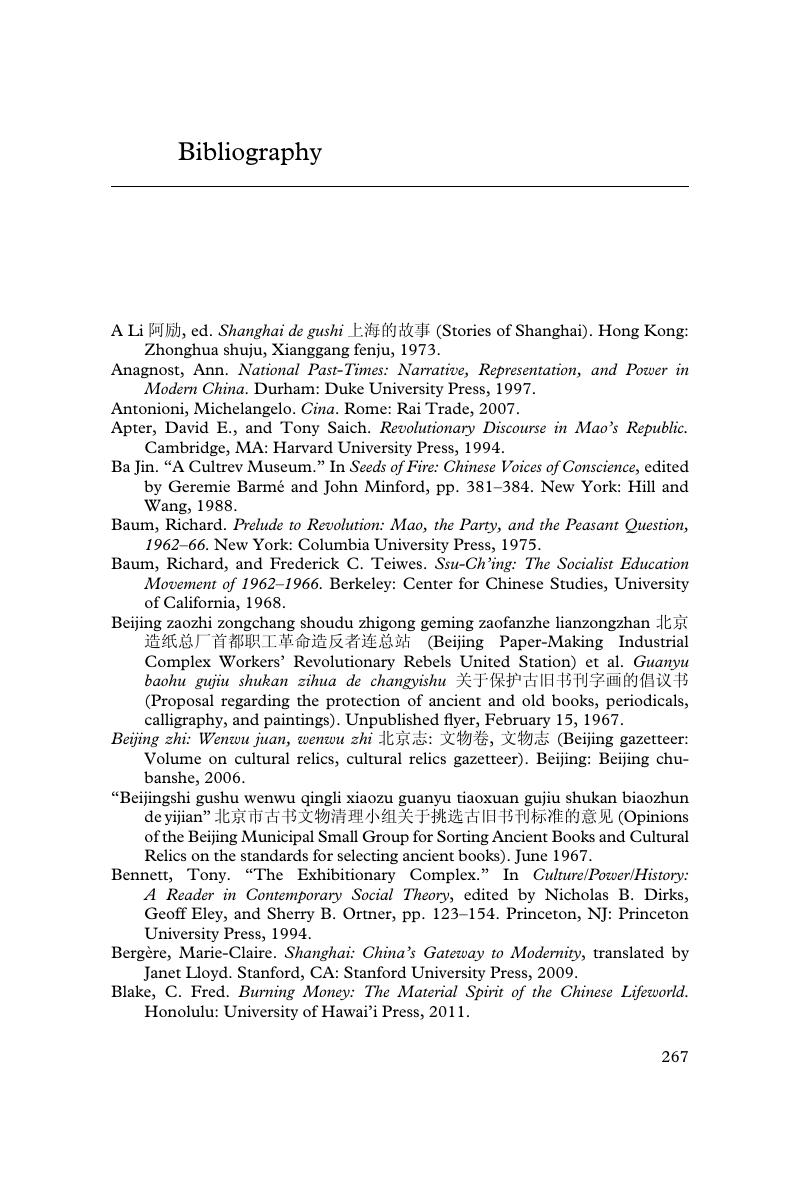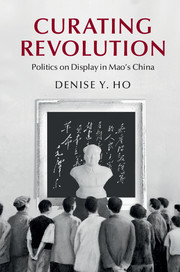Book contents
- Curating Revolution
- Reviews
- Cambridge Studies in the History of the People’s Republic of China
- Curating Revolution
- Copyright page
- Dedication
- Contents
- Illustrations
- Abbreviations
- Acknowledgments
- Introduction
- 1 Making a revolutionary monument: The First Party Congress Site
- 2 Exhibiting New China: “Fangua Lane Past and Present”
- 3 Curating belief: Superstition versus science for Young Pioneers
- 4 Cultivating consciousness: The class education exhibition
- 5 The Cultural Revolution’s object lessons: The Exhibition of Red Guard Achievements
- 6 Antiquity in revolution: The Shanghai Museum
- Conclusion
- Bibliography
- Chinese Character List
- Index
- References
Bibliography
Published online by Cambridge University Press: 16 November 2017
- Curating Revolution
- Reviews
- Cambridge Studies in the History of the People’s Republic of China
- Curating Revolution
- Copyright page
- Dedication
- Contents
- Illustrations
- Abbreviations
- Acknowledgments
- Introduction
- 1 Making a revolutionary monument: The First Party Congress Site
- 2 Exhibiting New China: “Fangua Lane Past and Present”
- 3 Curating belief: Superstition versus science for Young Pioneers
- 4 Cultivating consciousness: The class education exhibition
- 5 The Cultural Revolution’s object lessons: The Exhibition of Red Guard Achievements
- 6 Antiquity in revolution: The Shanghai Museum
- Conclusion
- Bibliography
- Chinese Character List
- Index
- References
Summary

- Type
- Chapter
- Information
- Curating RevolutionPolitics on Display in Mao's China, pp. 267 - 286Publisher: Cambridge University PressPrint publication year: 2017



